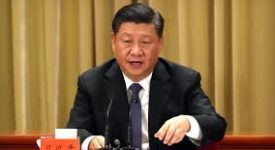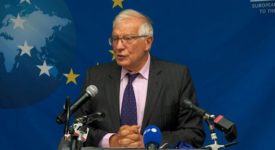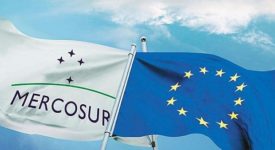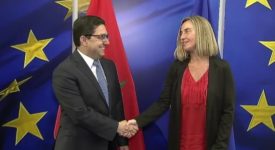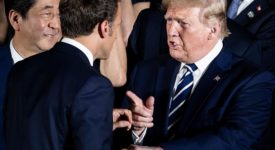After more than two years of talks, the European Union and Singapore successfully concluded the final negotiations on a free-trade agreement (FTA) in December 2012 in a deal which is, in the words of EU Trade Commissioner Karel De Gucht, “key to unlocking the gateway to the region and can be a catalyst for growth for EU exporters.” Then, in early July 2013, the EU and Japan completed the second round of negotiations for an FTA in Tokyo just two months after the first round in Brussels. In both these cases, the aim was for a comprehensive agreement on goods, services and investment, eliminating tariffs, non-tariff barriers and covering other trade-related issues, such as public procurement and competition.
The proliferation of different FTA negotiations between the EU and its partners in the Asia-Pacific region is a logical development as various regional free-trade negotiations are kicking off in East Asia and the Asia-Pacific region, including the U.S.-led Trans-Pacific Partnership (TPP) and Regional Comprehensive Economic Partnership (RCEP) to which also both Singapore and Japan have joined. Keeping the momentum in FTA negotiations within the so-called Asian ‘noodle-bowl’ is an urgent issue for the EU, because if Brussels fails to be involved in these ongoing, highly dynamic developments, the Union will lag behind in the process of rule-making in the wider Asia-Pacific region.
Emerging out of the ashes of Doha Round of the WTO, countries around the world are increasingly seeking to lower barriers with their trade partners, in an attempt to boost their economies amid the global economic slowdown. Thus, after the free-trade agreement with South Korea that came into force in July 2011, Brussels hopes that sealing this new deal with Singapore will increase the EU’s economic profile in Asia and also opens the doors for FTAs with other countries in the ASEAN region. The broad-based and comprehensive EU-Singapore FTA deal encompasses tariff-free access for goods, greater access to services markets, competition policy, intellectual property, technical barriers to trade, government procurement and sustainable development – in fact, it is hailed as the EU’s first “green FTA” because it is designed to promote green growth.
There were also direct references made to the FTA agreement between the U.S. and Singapore concluded in 2004 when the EU officials stressed that the Union obtained commitments “at least on a par” with the earlier U.S.-Singapore deal – illustrating the heightened degree of competition in the area of trade liberalization in the Asia-Pacific region. While its FTA agreement with Singapore is the first one for the EU with a member of the ten-nation Association of Southeast Asian Nations (ASEAN), both the EU and the U.S. hope that their existing FTA deals or ongoing negotiations will pave the way for a region-to-region trade deal between themselves and ASEAN. Apart from the sealed FTA agreement with Singapore, the EU has already begun negotiations with Malaysia and Vietnam, whereby it is hardly surprising that all three countries are currently also negotiating the U.S.-led Trans-Pacific Partnership (TPP) FTA. As recently as last month, American businessmen grouped under the U.S.-ASEAN Business Council met with the Indonesian President Yudhoyono in Jakarta likely to lobby the Indonesian government to join the TPP as a way to gain a better access to the Southeast Asian market.
The EU’s ongoing FTA negotiations with Japan are driven by similar concerns because, as Japanese Prime Minister Shizo Abe noted, “with the change of the strategic environment, the Japan-EU partnership needs to be strengthened further.” While Brussels apparently hopes to use a tough stance in the negotiations with Tokyo, much like it did earlier during the negotiations with Seoul, it may however lose some of its bargaining power if the TPP or RCEP (both with Japan on board) are finalized before the EU’s FTA with Japan. We can expect that in the near future, the EU will keep aggressively pursuing free-trade agreements with more Asian countries, like it has recently done with South Korea and Singapore, recognizing that the world is moving toward freer trade and they have to be part of that movement if they do not want to be placed out on a limb in rule-making in the Asia-Pacific region.


